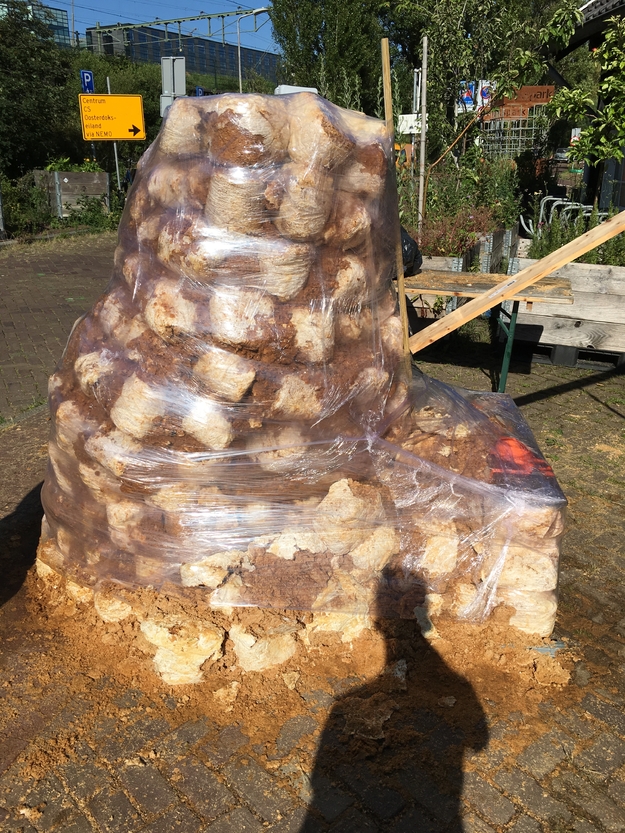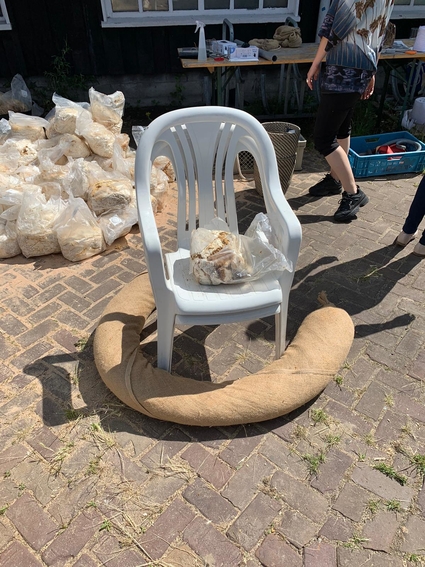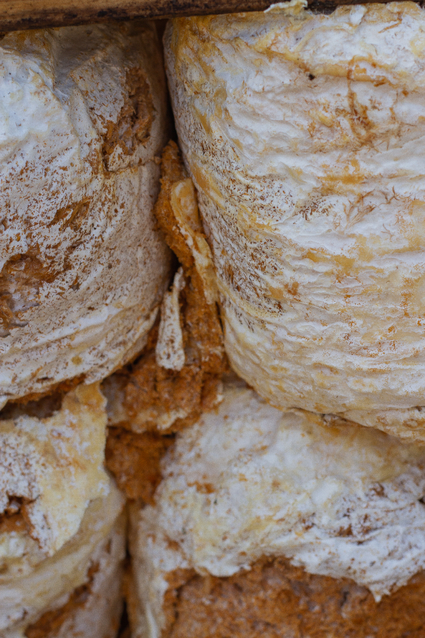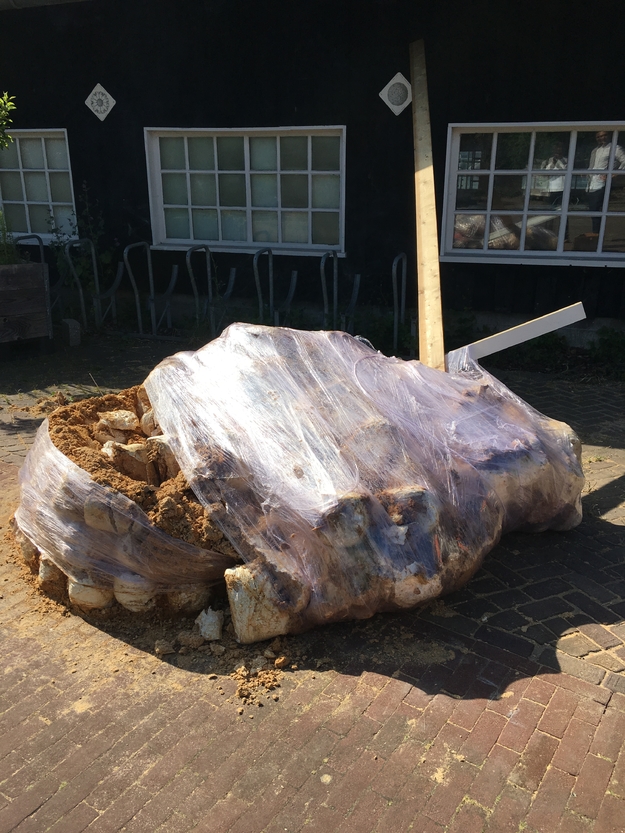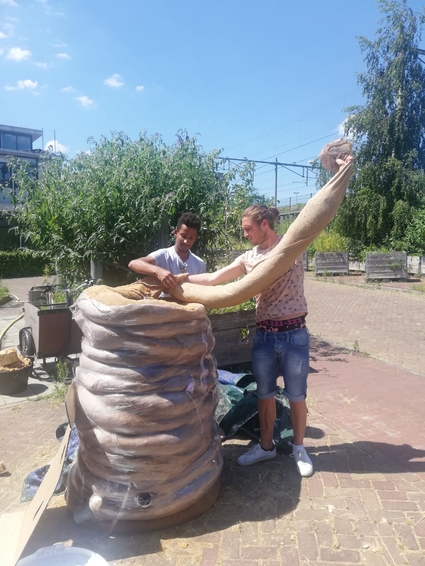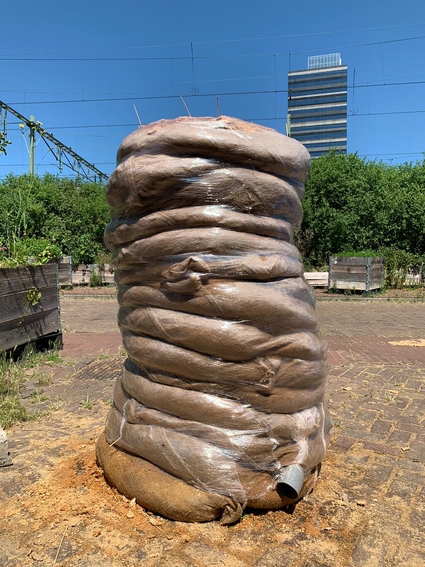Workshop
Earlier in the week, we did some tests on how to build with the mycelium. The workshop itself was very much a learn-by-doing process. It was good to see that everyone had their ideas, tried to vocalise them, draw them out, and show what they meant by doing it. This group project highlighted everyone’s opinion and were all taken into consideration. The results were a melting pot of everyone's hard work and ideas.
In the end, we build not one, but two towers. One tower was constructed using a brick-laying method; From a big pile of mycelium blocks that had grown together nicely, the participants chose a block and used them to create building blocks. We laid the blocks next to each other in a circle, layer by layer. This brought people to look and consider where each piece would fit best in this construction of a tower. Some bricks had parts crumbling off or even wholly crumbled apart. However, this was not a bad thing. These pieces were then collected in buckets, soaked in water, and then used as plaster or cement for areas where the bricks were not well-connected.
The second team created a tower by filling rolls of jute with mycelium. The team crumbled pieces off and also collected this in buckets. Then they simply made a knot on one end and filled the jute up with the crumbled mycelium. They assembled the tower by laying these rolls on top of each other like a roll of sand.
Fallen Tower
Unfortunately, when Monday morning came, and we checked on the project, the mycelium brick tower had collapsed. We do not entirely know how it fell or why, but this is not important. What is significant is that it fell apart, and it may be due to how we built it or how we left it, was not durable. To prevent the fallen tower from becoming waste, we used the mycelium to fill more jute and build on the second tower.
One of the most significant learning points that we found during the workshop was that there should be a type of mould in the tower’s shape. The mould would help with keeping the form coherent as well as making the tower look better.
We learned a lot of things during and after the workshop that we will reflect on together. So that on the next workshop we can produce even better results.
Follow the next blog post with our process: Commence Operation
